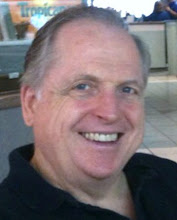I participated in a 3D Virtual University Webinar today on "Running a Hybrid Event" with live participants and virtual participants participating in the same conference. Due to the snow storm in Washington, DC, this week, the live session was cancelled and all participants were virtual--including one person aboard a plane bound for New York.
While the technology exists and is being refined, the actual learning design is largely missing. People are still used to "talking heads" and think it's great to have a PowerPoint presentation showing simultaneously with a speaker.
Between 1993 and 1998 I was involved in creating a variety of learning events around the world for different groups of adults. The overall focus was learning to change performance. Some of the events were goal-based learning, others were performance-focused learning. In the Spring of 1998 I designed and delivered a 2.5-day "hands-on-learning" event held in Cannes, France. The event was for 200 communication executives affiliated with Europe and Latin America and working for Accenture (Andersen Consulting). The event was called ELACOMM98 (go to the ELA-Comm Workshop to read about this event). You can watch an extract of the video made for this event.
This event was designed by a virtual team in approximately 12 weeks and was intended to accomplish a set of strategic goals for the Communications Market Unit of the global consulting firm. The actual event was designed to simulate actual consulting engagements with participants working together in teams to accomplish a series of tasks, then going into large groups to hear from subject matter experts about topics which they would immediately use when they went back to their small teams. The interaction was very real and dynamic in the 2.5 days in Cannes. It was, in part, a hybrid event including participation by a guest speaker using a webcam and laptop computer from his home office in Los Angeles to address a group of 200 participants in Cannes.
What was learned in the design and delivery of ELACOMM98 can certainly be used to guide the creation of virtual learning events. One of the first keys is to have the set of strategic performance goals for the organizers of the event. Once the goals are set, a particular design process is followed to create the learning design, taking full advantage of the 3D-capabilities afforded by Digitell's VirtualU.
Friday, February 12, 2010
Subscribe to:
Post Comments (Atom)




No comments:
Post a Comment
Thanks for your comments. They will appear on the blog shortly.